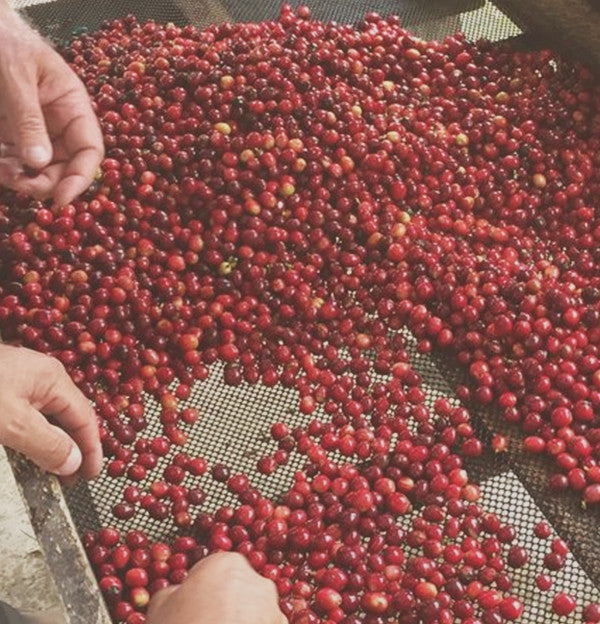
Selecting the best coffee starts by identifying the right landscape, climate, and geographic conditions, where skilled growers can develop the finest coffee crops. With the right kind of data, White Tale Coffee can cater to specific taste profiles and target individual flavor notes.
But just as important as where the farm lies is how the farmers sort their crops. A relatively few stray beans that are over or under ripened can change the flavor profile of an entire lot. Here, we’ll discuss the QA process for world class coffee.
Until very recently most sorting was done by hand. Growers and pickers used their best judgement to select the highest quality coffee cherries. In medium to large plantations, gravity played a role in the process as coffee cherries were transported by water through switch-backing sluices. Just like panning for gold, the densest, ripest cherries stay at the bottom while the reddish, less dense fruit would float.
More recently, coffee connoisseurs have sought a more precise way of separating the good from the great. While color is a good indication, it is a subjective measure and cannot be consistently controlled across pickers, lots, and seasons.
New approaches have relied more heavily on data to determine the perfect time to harvest and which beans to group together into lots. Some coffee intellectuals are looking to their colleagues in the wine industry for techniques that manage quality and deliver a superb cup of coffee. Experts now talk about veraison, a term used in the wine-making industry to identify the beginning of the fruit's ripening phase.
Two key indicators of quality: sweetness and acidity
Sugar content - measured in Degrees Brix (°Bx) is the sugar content of an aqueous solution. One degree Brix represents 1 gram of sucrose in 100 grams of solution (in this specific case is the juice extracted from the coffee cherry when squeezed). By measuring the precise sugar content of a coffee lot, quality can be controlled at scale and can be repeated season after season. Acidity, measured by pH levels is another marker of ripeness. The acid level in coffee cherries can be a signal of the resulting flavor profile after roasting including tangy, bright, or fruity.
Acidity, measured by pH levels is another marker of ripeness. The acid level in coffee cherries can be a signal of the resulting flavor profile after roasting including tangy, bright, or fruity.
The results of these new approaches has led to a rethinking of traditional coffee processing. Lucky for us, the ability to separate coffee into microlots means that we can select only the very best beans while leaving the remainder for bigger, less selective roasters. When we evaluate crops, we always look at how they separate their estate coffee from export grade, UGQ (usual good quality), and domestic consumption grades.
Finding the best coffee requires dedication, attention to detail, good partnerships, and lots of traveling. It’s hard work, but the payoff is in the perfect cup.
10:03 a.m. - You can feel the excitement in the Sorting section of a small farm in the province of Antioquia. Pickers or recolectores look at coffee cherries as if they were pearls. Every now and they make a two-second pause, staring closely at one to make sure it goes to the right bucket.
17.5°Bx -Proud small coffee farm owner Carmen Cecilia shows one of the brix readings she gets after sampling one of her microlots.
5.0 - pH level of a second microlot Carmen Cecilia's sons are preparing for a special customer they work with in Norway. Just in line with the average for the type of coffee shrub variety (Caturra) she grows in her property - and the same as bananas. Human skin has a pH level of 5.5.


Leave a comment: